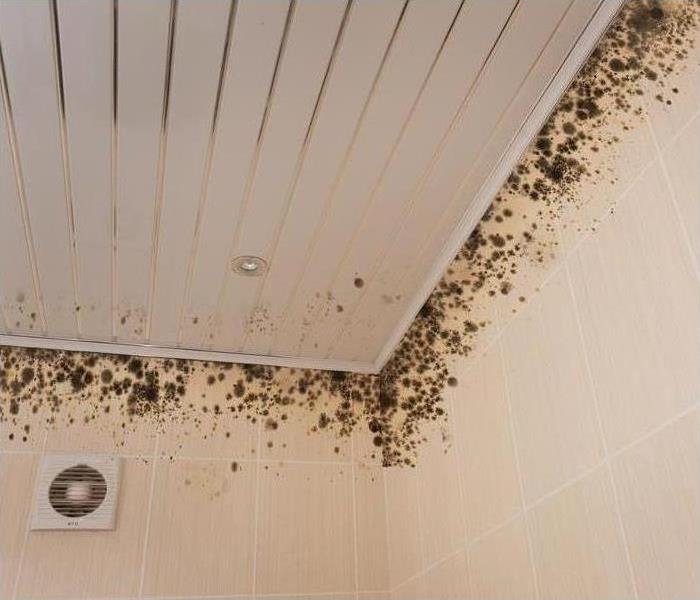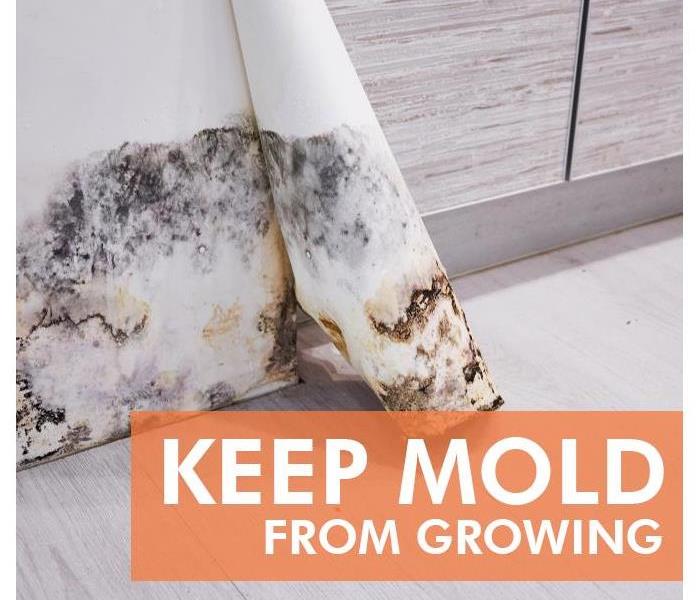3 Ways Rain Affects Mold
1/3/2024 (Permalink)
 The presence of moisture supports mold growth.
The presence of moisture supports mold growth.
You may notice an increased reaction to the presence of mold after rain in Claremore, OK. The effects of this natural phenomenon may be exacerbated if black mold or another potentially toxigenic species is present in a residence. Here are three effects of rain on fungi.
1. Rain Supplies Moisture
Rain is an important part of the natural water cycle. Precipitation replenishes moisture levels and provides one of two components necessary for mold spores to settle down and start to grow on surfaces that provide a food source. It is important to address any indoor moisture problem, as it can make mold growth more likely.
2. Moisture Stimulates Growth
A combination of water and nutriment from plant cellulose in building materials and other sources can support indoor mold growth. Spores present everywhere in the air will determine whether the fungus that grows is a toxigenic black mold, also known as Stachybotrys Chartarum, or another species. There are anywhere from tens to hundreds of thousands of species of mold, and professional sampling and lab analysis are necessary to identify any fungus.
3. Rain Worsens Mold
Once mold has started growing, rain can replenish moisture levels through a leak or cause indoor humidity levels to rise. It will be necessary to fix leaks prior to scheduling mold cleanup. Homeowners may also need to take preventative measures to control indoor moisture levels, such as running a dehumidifier in mold-prone areas after remediation is complete.
The presence of moisture supports mold growth. You may notice an increased reaction to the spores and microbial volatile organic compounds fungi produces during the growth cycle, particularly if black mold or another toxigenic species is growing at a residence in Tulsa, OK. Homeowners should rely on professionals to provide mold cleanup services and identify ways in which the conditions in a structure can be adjusted to prevent fungal growth.
Mold in Your Rental Home
12/20/2022 (Permalink)
 If you are experiencing mold issues in your Claremore home, give SERVPRO of Rogers County a call!
If you are experiencing mold issues in your Claremore home, give SERVPRO of Rogers County a call!
Mold in Your Rental Home
Mold is a major problem in many homes. It can cause serious damage to your house, but it's not always easy for tenants to make sure that their landlords deal with mold issues. This article will explain what you should do if you have a mold problem in your apartment or house and how long your landlord may take to fix the issue.
Where does mold come from?
Mold can come from a variety of sources. It is a water-based fungus, so it thrives in damp places. Mold grows best in warm and moist environments: bathrooms and kitchens are common breeding grounds for mold because they experience repeated wetting from people showering or cooking. Mold also loves to grow outdoors, especially near trees and shrubs where there is plenty of natural moisture to keep it going strong!
Habitable Conditions
Common sense tells us that a landlord should keep the premises in a habitable condition—that is, fit to be lived in. But what does that mean? And how long does it take for a landlord to fix an issue like mold?
The lease agreement you signed with your landlord may require them to provide certain services and maintain your rental property at "habitable" levels (which, it bears noting, are not always synonymous with cleanliness). The legal definition of "habitable" varies by state and borough (or county), but generally speaking, if the property itself is safe enough for humans and animals to live there without undue risk of harm, then it's probably habitable under most laws. When it comes down to mold issues specifically, however, the law requires landlords to make repairs within 30 days after their tenants notify them about any problems they notice during the first two weeks after they move into their new homes. Landlords who fail in this duty may be required by law to pay damages equal up until when repairs begin or up until when they're actually completed depending on which comes first.
In most places, tenants are legally entitled to safe and habitable living conditions under state and/or local law. If there are problems with your rental unit that make it unsafe or otherwise uninhabitable, you can report them to your landlord so that he or she can fix them. You may also be able to withhold rent until the problem gets resolved (if you have been paying rent on time).
Document Everything
In the event that you do have to go to court, it is important to have documentation of habitability issues. This includes photos of mold, dates, and times when you contacted your landlord and/or health department or insurance company.
Going to Court
If your landlord does not resolve the mold problem, or if you have any other habitability issues with your rental unit, such as a lack of heat or hot water, you can take them to court. You will be able to sue for damages in civil court. You may be entitled to recover lost rent as well as attorneys' fees and costs if you win the case.
Contact Your Landlord Immediately
If you have a mold problem, you should contact your landlord immediately and start documenting the situation. This is important because it's the first step in taking action against them. If you don't document it, then there's no proof that anything is wrong or that they're responsible for it. Without proof of your claim, you will have difficulty getting compensation or forcing them to take care of things properly.
If you are experiencing a mold problem, the most important thing to do is contact your landlord immediately. The second most important thing is to document every interaction with them, starting with the date and time, who was there, and what was said and done. This can help you in court if necessary because it shows that they were aware of the problem but didn't take proper care of it (or took too long). Pictures or videos taken from different angles showing how bad things look will help bolster your case!
If you are experiencing mold issues in your Claremore home, give SERVPRO of Rogers County a call!

 24/7 Emergency Service
24/7 Emergency Service

